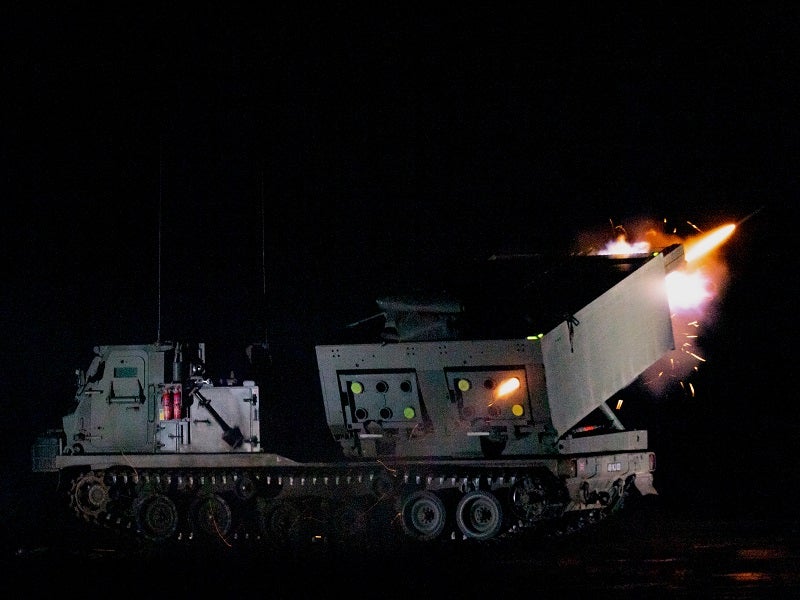
The UK is looking to double its M270 Multiple Launch Rocket System (MLRS) fleet in a bid to increase the quantity and quality of the British Army’s long-range fires capability, with efforts also including the apparent consideration of platforms in museums or acting as gate guards.
Details emerged at the DVD 2022 event at the UTAC Millbrook vehicle test site, with the British Army’s presence and tone at the event indicating a shift to more rapidly developed and deployable capabilities, as well as ensuring that systems currently in service are more readily available for operations.
With the ongoing Ukraine-Russia war offering no end of examples as to what capabilities are most impactful on the modern battlefield, it is to long-range artillery and rocket systems that attention has been most focused. Both sides have made great use of artillery as the war drags towards its ninth month and battlelines become entrenched.
However, the provision to Ukraine by NATO allies of high-end long-range fires, such as the M142 High Mobility Artillery Rocket System (HIMARS) from the US and the UK’s supply of M270 MLRS, has proved a decisive factor in halting the Russian advance and even helping turn the tide in certain areas.
For the UK, a key lesson learned has been the effectiveness of long-range fires, with one effort under the British Army’s Joint Future Effects Capability intended to increase the force’s fleet of M270 MLRS vehicles from its current count of around 40 by between 50-100%, while also undertaking an extensive recapitalisation of the fleet in order to improve availability rates.
To this end, a range of sources are being sought to potentially acquire secondhand M270 platforms, including those acting as gate guards, in museums, or in service with foreign nations, Army Technology understands. Vehicles acquired would also benefit from the recapitalisation process the current fleet will go through.
In addition, effort is ongoing to procure munitions able to be fired out to a range of 150km, from around 80km currently, in a bid to extend the area the M270 can influence. Indeed, aspirations also include pushing possible munitions ranges, not necessarily from the MLRS, to more than 500km.
UK provision of M270s to Ukraine
In June, it emerged that the Government of Norway would cooperate with the UK to transfer M270 MLRS to Ukraine, with Norway suppling three MLRS in need of “significant modernisation” to the British military, which itself sent an initial batch of three M270’s to support Kyiv’s fight against Russia.
Speaking at the time, Norwegian Defence Minister Bjørn Arild Gram said that Norway had “agreed with the British that they will receive Norwegian weapons to be able to ship as part of their MLRS to Ukraine”.
In August this year, the UK Ministry of Defence announced that it would be sending a further three M270 MLRS platforms to Ukraine as part of its ongoing military support.
According to GlobalData, the M270 MLRS is operational with the armed forces of Bahrain, Finland, Egypt, France, Germany, Greece, Israel, Italy, Saudi Arabia, Japan, South Korea, Turkey, the US and the UK.
The MLRS launcher unit comprises an M270 launcher loaded with 12 rockets, packaged in two six-rocket pods. The launcher, which is mounted on a stretched Bradley chassis, is a self-loading and self-aiming system. Without leaving the enclosed cab, the crew of three (driver, gunner, and section chief) can fire up to 12 MLRS rockets in fewer than 60 seconds.




